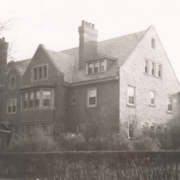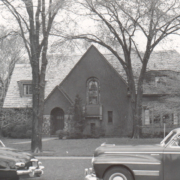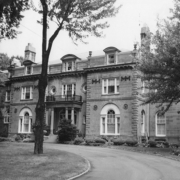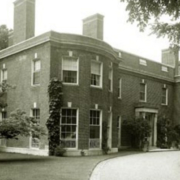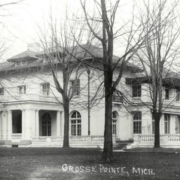Historical Architecture of Grosse Pointe – Moving With The Times – 41 Provencal
In the late nineteenth century an international movement of decorative and fine arts had begun in Britain. Known as the Arts and Crafts movement it stood for traditional craftsmanship using simple forms whilst harnessing natural materials. The Arts and Crafts movement flourished in Europe and North America between 1880 and 1910, heavily influencing art and architecture.
The first Arts and Crafts Society in the United States was established in Boston in 1897. In 1906 a similar society was formed in Detroit, believed to be the second such organization in the United States. At the time many of the leading architects in Detroit were huge advocates of the movement including William Buck Stratton and Albert Kahn who was one of the original-founding members of the society.
Both Stratton and Kahn were huge exponents of the Arts and Crafts movement in the City, regularly employing key components of the style into their residential projects. As part of the dedication to the societies expansion Stratton helped organize the first and second annual exhibitions of arts and crafts – held at the Detroit Museum of Art in 1904 and 1905. By 1916 the organization became the first Arts and Crafts society in the US to construct its own building. Source: www.detroit1701.org
In 1906 Albert Kahn was commissioned by Lewis H. Jones to design a large mansion in Indian Village – located at 8191 East Jefferson Avenue. Lewis H. Jones was president of the Detroit Copper and Brass Rolling Mills Company, along with being an active official in many other large manufacturing projects and organizations throughout the City.
The design of the home Albert Kahn conceived for Lewis Jones was one of grandeur. It encompassed a classic Tudor Revival style along with keeping the spirit of the Arts and Crafts Movement throughout.
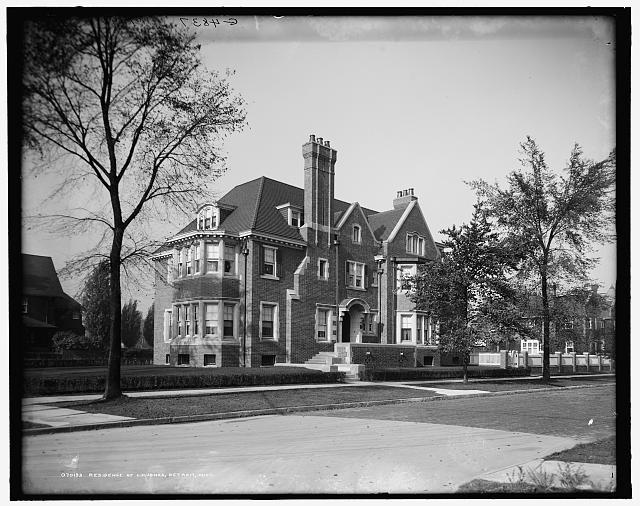
The home at its 8191 East Jefferson Avenue location – Courtesy of detroityes.com
It is constructed from brick with exquisite limestone trim around the windows and doors. The home has several defining features including the large chimney above the front façade, the immense seven-window bay on the living room, along with elegant detailing. The front door features a bonnet arch, and as with many of Kahn’s homes of this splendor the exterior is intricate, imposing and intriguing. By the late 1920’s Jefferson had transitioned into a busy commercial street, and the tranquility the Jones’s had once enjoyed in their home was becoming a distant memory.
The family decided to move to the calmer, but now firmly established community of Grosse Pointe Farms. Not wanting to leave their beloved home behind they took it with them – all 8,300 sq ft and 18 rooms of it – relocating it to 41 Provencal Road. While their house was carefully dismantled brick by brick the Jones family resided in Grosse Pointe Village.
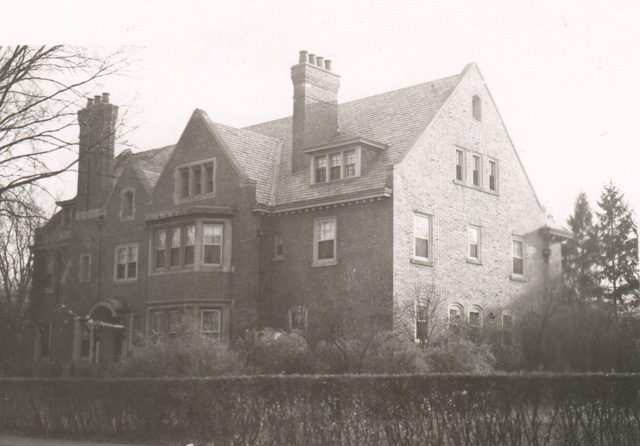
The family elected to retain the sublime arts and crafts decorative elements that were so integral to the design of their home – inside and out. However, while the home was being rebuilt Mr. Jones opted to incorporate the latest technology available during the era, including up-to-date heating, plumbing and electrical systems.
The majority of the house remained unchanged, aside, we believe, to a structural change that was made to the roof, which was raised to expand the third floor, while the library was enlarged to incorporate a service hallway.
The Jones’s had managed to accomplish the perfect transition – retaining their superb Art’s and Crafts home just as Kahn had created it, whilst making enough internal modifications to allow them, and the house, to move with the times.
 Throughout the course of his career Kahn designed several grand homes in the Indian Village community, many of which still exist today. The house now located at 41 Provencal was not originally intended to be here, but we are certainly glad it is, and this superb home cuts a striking figure on this prestigious street.
Throughout the course of his career Kahn designed several grand homes in the Indian Village community, many of which still exist today. The house now located at 41 Provencal was not originally intended to be here, but we are certainly glad it is, and this superb home cuts a striking figure on this prestigious street.
*Photos courtesy of the Higbie Maxon Agney archives unless stated.
Written by Katie Doelle
Copyright © 2017 Katie Doelle

